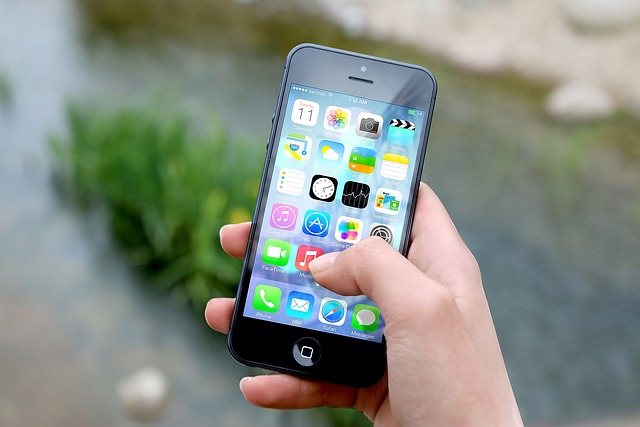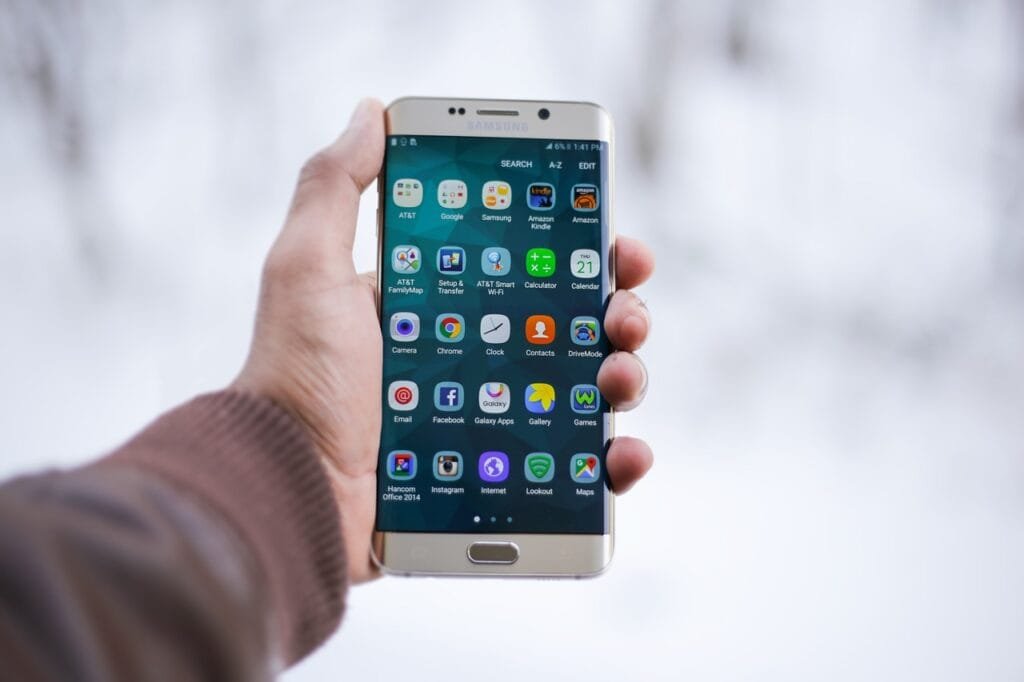Building Brand Loyalty
Importance of Brand Loyalty
Creating brand loyalty is paramount for any business aiming for long-term success. Brand loyalty not only fosters a sense of trust and connection between consumers and brands, but it also significantly contributes to increasing sales and revenue. Research indicates that loyal customers drive between 12% and 18% revenue growth each year through their purchasing habits (LoyaltyLion).
Establishing a loyal customer base has several benefits, including:
| Benefits of Brand Loyalty | Explanation |
|---|---|
| Increased Revenue | Loyal customers tend to spend more, with 57% of consumers reported to spend more on brands they trust (Clevertap). |
| Customer Retention | It is generally more cost-effective to retain existing customers rather than acquiring new ones, as loyal customers are less likely to churn. |
| Positive Word-of-Mouth | Satisfied and loyal customers are likely to recommend your brand to others, enhancing brand visibility and attracting new customers. |
| Resilience to Competition | Loyal customers provide a buffer against competitive pressures and price-based competition, making them less susceptible to switching brands. |
Impact of Brand Loyalty Programs
Implementing effective brand loyalty programs can greatly enhance customer loyalty, incentivizing repeat purchases and fostering deeper engagement with the brand. Studies reveal that 75% of consumers favor brands that offer rewards programs, which means that by providing tangible benefits, you can motivate consumers to remain loyal to your brand.
Additionally, loyalty programs not only enhance consumer satisfaction but also align clients with pricing and promotions they find appealing. Here are some key impacts of loyalty programs on brand loyalty:
| Impact of Loyalty Programs | Description |
|---|---|
| Customer Engagement | Loyalty initiatives encourage frequent interactions between the customer and the brand, promoting a habit of engagement. |
| Increased Customer Value | Loyal customers are likely to make more frequent and larger purchases, contributing to increased customer lifetime value. |
| Market Differentiation | Effective loyalty programs can set a brand apart from its competitors, enhancing brand perception and customer loyalty. |
| Consumer Insights | Loyalty programs provide valuable data about consumer preferences and behavior, enabling businesses to tailor marketing efforts and improve customer experience. |
These programs can be structured in various ways, such as points-based, tiered, or subscription-based, allowing businesses to choose a format that best aligns with their goals and customer preferences. Investing in loyalty programs can be a strategic move toward increasing brand loyalty and driving sustained growth for your business. For additional insights, you may want to check our article on customer loyalty strategies.
Types of Loyalty Programs
Understanding the various types of loyalty programs is essential for creating brand loyalty that resonates with your customers. You can enhance customer retention and increase their lifetime value through effective implementation. Below, we explore several popular loyalty program types.
Points-Based Programs
Points-based loyalty programs reward customers with points for their purchases, which can be redeemed for discounts, exclusive products, or other rewards. A well-known example of this is Sephora’s “Beauty Insider” program, which incentivizes customers to shop frequently by allowing them to accumulate points with every purchase.
| Feature | Description |
|---|---|
| Reward Mechanism | Points earned per dollar spent |
| Redemption Options | Discounts, free products, exclusive items |
| Engagement Techniques | Birthday gifts, double point days |
Value-Based Programs
Value-based loyalty programs reward customers not just for purchases but also for engaging with the brand or its community. For example, the LEGO Insiders program rewards customers for tasks like registering LEGO sets and participating in community events. This approach emphasizes building a relationship with customers beyond transactional interactions (LoyaltyLion).
| Feature | Description |
|---|---|
| Engagement Focus | Rewards for community involvement |
| Additional Incentives | Exclusive content, early access to new products |
| Brand Loyalty Goal | Foster a deeper connection with the brand |
Tiered Programs
Tiered loyalty programs, such as Astrid & Miyu’s “Astrid & You,” offer escalating rewards based on customer spending or engagement levels. This type caters well to businesses selling high-end products or those in industries where spending may fluctuate.
| Feature | Description |
|---|---|
| Tier Levels | Bronze, Silver, Gold, etc. |
| Reward Offerings | Increased benefits at higher tiers |
| Customer Retention Goal | Encourage higher spending to reach next tier |
Subscription-Based Programs
Subscription-based loyalty programs provide ongoing benefits for customers who pay a regular fee. Amazon Prime is a prominent example, granting members perks like free two-day shipping and access to exclusive content for an annual fee. Such programs can lead to significant revenue growth as they create a strong sense of loyalty among frequent customers.
| Feature | Description |
|---|---|
| Membership Fee | Regular payment for continued benefits |
| Perks Offered | Free shipping, exclusive content access, discounts |
| Customer Retention Goal | Increase frequency of purchases through convenience |
By understanding and implementing these various types of loyalty programs, you can significantly enhance your brand loyalty strategies. Learn more about creating brand loyalty and explore additional customer loyalty strategies that can complement these loyalty programs.
Successful Loyalty Program Examples
Creating brand loyalty is essential for any business looking to strengthen its customer relationships and drive revenue. Successful loyalty programs can take various forms, each designed to incentivize customers in unique ways. Below are four exemplary loyalty programs that have effectively engaged their audiences.
Sephora’s “Beauty Insider”
Sephora’s “Beauty Insider” program is a standout example of a points-based loyalty program. Customers earn points for every purchase, which can be redeemed for discounts, exclusive products, or other rewards. This program allows Sephora to foster a deep connection with its customers by offering meaningful rewards that enhance the shopping experience.
| Reward Tier | Points Required | Benefits |
|---|---|---|
| Insider | 0 | Birthday gift, exclusive promotions |
| VIB | 1,000 | All Insider benefits + 15% off during sales |
| Rouge | 2,500 | All VIB benefits + early access to products |
LEGO Insiders Program
The LEGO Insiders program exemplifies a value-based loyalty program. It rewards customers not just for purchases but also for registering LEGO sets and engaging with the customer community. This community-building aspect not only enhances customer loyalty but also fosters a sense of belonging among LEGO enthusiasts.
| Engagement Activity | Rewards Earned |
|---|---|
| Purchase LEGO Sets | Points earned per dollar spent |
| Registering Sets | Exclusive product offers |
| Participating in Community Events | Special discounts |
Astrid & Miyu’s “Astrid & You” Program
Astrid & Miyu has designed a tiered loyalty program called “Astrid & You,” which offers increasing rewards and benefits based on customer spending and engagement. This type of program is particularly effective for high-end products, as it encourages customers to increase their purchases to reach the next tier of rewards.
| Tier Level | Spending Requirement | Benefits |
|---|---|---|
| Bronze | $0 | Basic rewards and access to promotions |
| Silver | $250 | Increased benefits and exclusive items |
| Gold | $500 | All Silver benefits + free shipping, early product access |
Chick-fil-A One Program
Chick-fil-A has successfully attracted 13 million active users to its loyalty program, known as Chick-fil-A One. This program offers enticing benefits such as free treats, convenient drive-thru experiences, and exclusive rewards. Its simple structure and clear benefits encourage customer retention and satisfaction.
| Reward Structure | Benefits |
|---|---|
| Points System | Earn points for every dollar spent |
| Free Treats | Redeem points for free menu items |
| Exclusive Offers | Personalized offers based on preferences |
These exemplary brand loyalty programs demonstrate various strategies that can be employed in creating brand affinity and customer retention. Implementing effective loyalty strategies tailored to your target audience can strengthen your brand and drive long-term success. For more insights on effective strategies, explore our articles on brand loyalty programs and customer loyalty management.
Statistics on Brand Loyalty
Understanding the impact of brand loyalty is essential for implementing effective brand loyalty strategies. This section explores key statistics that demonstrate how brand loyalty affects revenue growth, customer spending behavior, and the influence of loyalty programs on purchases.
Revenue Growth from Loyalty Program Members
Research from Accenture indicates that loyalty program members can drive between 12% and 18% revenue growth each year. This substantial contribution highlights the financial benefits of engaging customers through loyalty initiatives.
| Revenue Growth | Percentage |
|---|---|
| Annual Growth from Loyalty Members | 12% – 18% |
Additionally, companies with high brand loyalty scores grow revenues 2.5 times faster than their industry peers. These businesses also deliver 2 to 5 times the returns to shareholders over a ten-year period, further underscoring the importance of loyalty in driving profitability (Investopedia).
Customer Spending Behavior
Loyalty influences customer spending significantly. According to research, 57% of consumers are willing to spend more on brands to which they are loyal. For example, in 2021, 70% of Macy’s transactions were linked to its loyalty program, demonstrating how a structured loyalty initiative can drive sales.
| Customer Spending Behavior | Percentage |
|---|---|
| Consumers who spend more on loyal brands | 57% |
| Macy’s transactions tied to loyalty program | 70% |
Data from Clevertap illustrates the direct correlation between loyalty program membership and increased spending.
Influence of Loyalty Programs on Purchases
Companies that implement loyalty programs experience almost five times the return on investment (ROI). These programs significantly increase the likelihood of multiple purchases and customer referrals, making them a strategic asset for brands looking to enhance engagement.
| Influence of Loyalty Programs | ROI Improvement |
|---|---|
| Average ROI for Companies Running Loyalty Programs | ~5x |
As illustrated by WorkRamp, consistent customer interaction through loyalty initiatives not only boosts sales but also improves overall customer retention strategies.
In summary, these statistics reveal the powerful impact of creating brand loyalty through effective loyalty programs. Your brand can capitalize on this potential to drive growth and enhance customer relationships. For further insights, explore our resources on building brand loyalty and measuring brand loyalty.
Key Factors in Customer Loyalty
Impact of Customer Education Programs
Customer education programs play a vital role in fostering brand loyalty. By informing customers on how to maximize value from your products or services, you can significantly drive loyalty. For example, when Qualified implemented a customer education program using WorkRamp, they noted that trained accounts were more than twice as likely to renew and were better equipped to utilize the product effectively. This not only increases customer retention but also enhances their ability to promote your brand positively.
Role of Customer Service
Exceptional customer service is crucial for maintaining loyalty. Customers are more inclined to remain loyal to brands that provide prompt and effective support. In fact, research indicates that 73% of customers consider customer experience as a major factor in their purchasing decisions. This means that a positive experience can often outweigh traditional advertising strategies. Investing in customer service training and resources can help your team exceed customer expectations and build long-lasting relationships.
Social Media Influence
Effective social media engagement can convert casual customers into fervent brand advocates. Positive experiences shared on platforms like Facebook, Instagram, and Twitter can amplify awareness and trust in your brand (Foremost Media). Loyal customers are likely to promote your business through word-of-mouth and reviews, reinforcing your brand identity and expanding your organic reach. Implementing a strong social media strategy is essential for cultivating this loyalty.
Customer Experience and Brand Loyalty
Customer experience is intrinsically linked to brand loyalty. A study found that 65% of customers believed that a positive brand experience was more influential than good advertising. Moreover, 45% of customers would recommend a brand after a positive experience, leading to significant word-of-mouth marketing. Monitoring customer engagement—through support requests, survey responses, and usage patterns—can offer you insights into customer loyalty, helping to predict potential churn. Engaging consistently with your customers will pave the way for loyalty to your brand.
By focusing on these key factors, you can create a robust strategy for increasing brand loyalty within your organization.
Measuring and Improving Loyalty
To effectively boost your brand loyalty, you must measure and improve various key metrics that reflect customer engagement and satisfaction. This section outlines the essential elements, including customer retention rate, customer lifetime value, net promoter score, and tracking customer engagement.
Customer Retention Rate
The customer retention rate (CRR) is a vital metric in understanding the loyalty of your customer base. It measures the percentage of customers who continue to do business with you over a specific period. As per data, the average customer retention rate for B2B brands is 77%. However, relying solely on this metric may not provide comprehensive insights into the reasons behind loyalty. It is essential to link retention rates with customer experience metrics to grasp the underlying loyalty drivers.
| Retention Rate Range | Business Implication |
|---|---|
| 0% – 30% | High churn, low customer loyalty |
| 31% – 60% | Moderate loyalty, need for improvement |
| 61% – 90% | Good loyalty, potential for growth |
| 91% – 100% | Excellent retention, strong brand loyalty |
Customer Lifetime Value (CLV)
Customer lifetime value (CLV) indicates the total profit generated throughout a customer’s relationship with your brand. This metric is crucial for understanding the overall loyalty and profitability of your customer base. For a business to appear loyal, the CLV should ideally be at least three times the cost of acquiring that customer. Monitoring CLV provides valuable insights into customer loyalty related to revenue generation (CustomerGauge).
| CLV Range | Business Reaction |
|---|---|
| <$150 | Reevaluate acquisition strategies |
| $150 – $500 | Moderate loyalty; enhance engagement |
| $500 – $1,000 | Good loyalty; sustain and grow relations |
| >$1,000 | High loyalty; focus on retaining these customers |
Net Promoter Score (NPS)
The Net Promoter Score (NPS) is widely recognized as an effective customer experience metric. It gauges the likelihood of customers recommending your products or services to others by categorizing them into promoters, passives, and detractors. Understanding these categories helps assess customer loyalty levels. Furthermore, monetizing NPS can provide insights into the direct impact of customer experience on revenue, emphasizing the importance of loyalty.
| NPS Category | Score Range | Loyalty Implication |
|---|---|---|
| Promoters | 9-10 | Highly loyal, likely to refer others |
| Passives | 7-8 | Neutral, at risk of switching |
| Detractors | 0-6 | Unhappy customers, potential churn risk |
Tracking Customer Engagement
Monitoring customer engagement is pivotal in predicting loyalty and identifying potential churn. This includes analyzing survey responses, support requests, and usage statistics. Increased engagement often correlates with higher customer loyalty, while decreased engagement signals possible churn risks. Keeping track of repeat purchases and referrals also assists in identifying loyal customers and understanding their influence on your business (CustomerGauge).
| Engagement Metrics | Indicators of Loyalty |
|---|---|
| Repeat Purchases | Confirm brand connection |
| Customer Surveys | Reveal satisfaction levels |
| Support Requests | Reflect needs and pain points |
| Referral Rates | Indicate brand trust |
By focusing on these metrics, you can effectively measure and enhance your efforts in creating brand loyalty. Each metric provides unique insights that should be integrated into your overall customer loyalty strategies for optimal results. For more information on metrics related to brand loyalty, explore our guide on measuring brand loyalty.
Executive Perspectives on Brand Loyalty
Budget Allocation for Loyalty
Effective allocation of resources towards loyalty initiatives is critical for enhancing brand loyalty. According to the 2023 PwC Customer Loyalty Executive Survey, 63% of executives reported increasing loyalty budgets during the last planning cycle. On average, loyalty budgets accounted for approximately 5% of total revenue, which could range between $5 million and $250 million annually, depending on company size (PwC). Understanding these allocations helps in developing robust strategies that resonate with your target audience.
| Company Size | Annual Loyalty Budget Range |
|---|---|
| Small | $5 million – $20 million |
| Medium | $20 million – $100 million |
| Large | $100 million – $250 million |
Consumer Perception vs. Executive Definition
There exists a noticeable disparity between how executives and consumers define brand loyalty. While 50% of executives view subscription services as an indication of loyalty, only 20% of consumers share this sentiment. Additionally, 43% of executives utilize customer satisfaction scores to gauge loyalty, in contrast to only 25% of customers who see providing feedback as an act of loyalty (PwC). These differing perspectives underscore the need for executives to align their strategies with consumer values for effective loyalty management.
Customer Satisfaction Metrics
Customer satisfaction metrics play a crucial role in evaluating brand loyalty. Executives increasingly rely on satisfaction scores to assess loyalty, but understanding consumer behavior is equally important. Metrics such as Net Promoter Score (NPS) and Customer Satisfaction Score (CSAT) provide valuable insights that can guide future strategies. Companies should aim to bridge the gap between executive expectations and consumer experiences to foster stronger loyalty.
| Metric Type | Description |
|---|---|
| Net Promoter Score (NPS) | Measures customer loyalty and likelihood of referrals |
| Customer Satisfaction Score (CSAT) | Assesses customer satisfaction based on specific interactions |
Drivers of Brand Loyalty
Identifying the primary drivers of brand loyalty is essential for crafting effective loyalty strategies. Quality of product or service remains the foremost driver across various industries. Nearly half of customers noted positive experiences with a product or service that significantly influence loyalty. Other critical drivers include obtaining good value for price, reliability, and consistency. While there is alignment on these factors, executives often overestimate how much consumers prioritize personalized experiences.
| Loyalty Driver | % of Customers Ranking it as Priority |
|---|---|
| Quality of Product/Service | 48% |
| Good Value for Price | ~ Pricing Data Not Available |
| Reliability | ~ Pricing Data Not Available |
| Consistency | ~ Pricing Data Not Available |
By understanding and addressing these key areas, you can develop robust strategies for creating brand loyalty that align with executive ambitions and consumer expectations.




















